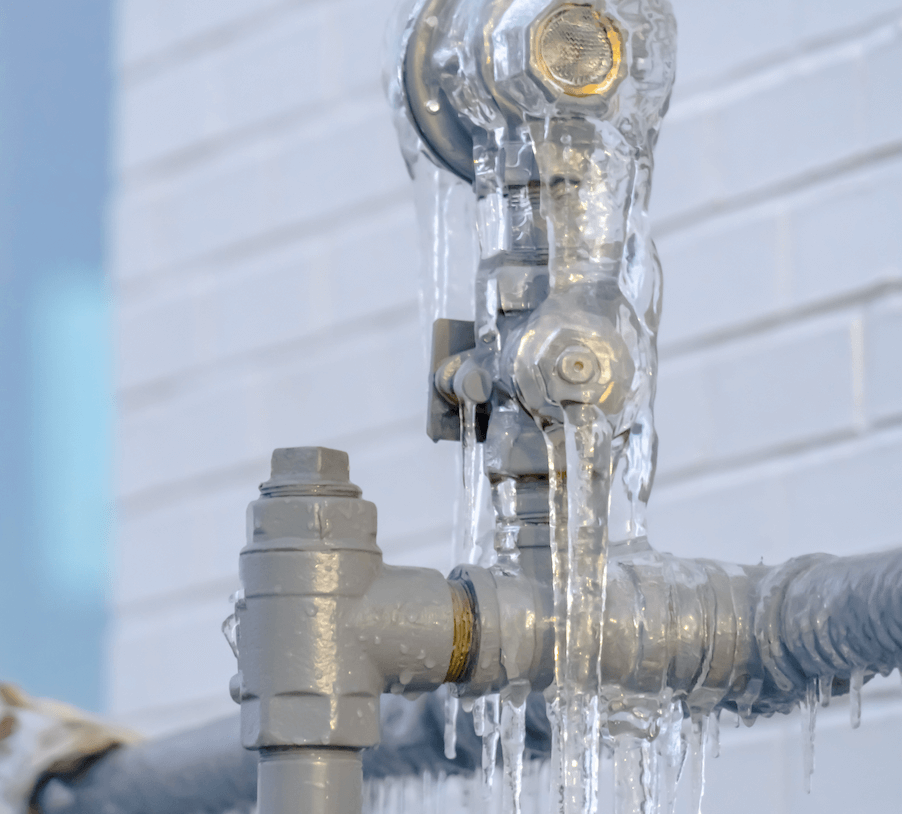Just about every person seems to have their unique piece of advice about Preventing and dealing with frozen pipes.

Winter can ruin your pipes, particularly by freezing pipes. Below's just how to avoid it from occurring and what to do if it does.
Introduction
As temperature levels decrease, the danger of icy pipelines increases, potentially leading to pricey repair work and water damage. Comprehending how to prevent frozen pipelines is essential for home owners in cold environments.
Recognizing Icy Pipelines
What causes pipes to ice up?
Pipelines ice up when revealed to temperatures below 32 ° F (0 ° C) for expanded periods. As water inside the pipelines ices up, it broadens, taxing the pipeline walls and potentially creating them to burst.
Risks and problems
Icy pipelines can lead to water disturbances, residential property damages, and pricey repair services. Burst pipelines can flooding homes and cause extensive architectural damages.
Indicators of Frozen Pipes
Recognizing frozen pipelines early can prevent them from breaking.
Exactly how to identify frozen pipes
Look for decreased water circulation from taps, unusual odors or noises from pipes, and visible frost on revealed pipes.
Avoidance Tips
Insulating prone pipelines
Cover pipes in insulation sleeves or use warm tape to shield them from freezing temperatures. Focus on pipes in unheated or external locations of the home.
Heating techniques
Maintain indoor spaces properly warmed, particularly locations with pipes. Open up closet doors to allow cozy air to distribute around pipelines under sinks.
Safeguarding Outside Pipes
Garden tubes and exterior taps
Disconnect and drain pipes garden tubes before winter. Install frost-proof spigots or cover outdoor faucets with shielded caps.
What to Do If Your Pipelines Freeze
Immediate actions to take
If you presume icy pipes, keep faucets open to eliminate stress as the ice melts. Use a hairdryer or towels taken in warm water to thaw pipes slowly.
Long-Term Solutions
Structural changes
Think about rerouting pipes away from exterior wall surfaces or unheated areas. Include additional insulation to attics, basements, and crawl spaces.
Updating insulation
Invest in top notch insulation for pipelines, attics, and walls. Correct insulation aids preserve constant temperatures and decreases the danger of icy pipes.
Conclusion
Protecting against icy pipes requires proactive procedures and fast feedbacks. By comprehending the causes, indicators, and preventive measures, homeowners can protect their plumbing throughout winter.
5 Ways to Prevent Frozen Pipes
Drain Outdoor Faucets and Disconnect Hoses
First, close the shut-off valve that controls the flow of water in the pipe to your outdoor faucet. Then, head outside to disconnect and drain your hose and open the outdoor faucet to allow the water to completely drain out of the line. Turn off the faucet when done. Finally, head back to the shut-off valve and drain the remaining water inside the pipe into a bucket or container. Additionally, if you have a home irrigation system, you should consider hiring an expert to clear the system of water each year.
Insulate Pipes
One of the best and most cost-effective methods for preventing frozen water pipes is to wrap your pipes with insulation. This is especially important for areas in your home that aren’t exposed to heat, such as an attic. We suggest using foam sleeves, which can typically be found at your local hardware store.
Keep Heat Running at 65
Your pipes are located inside your walls, and the temperature there is much colder than the rest of the house. To prevent your pipes from freezing, The Insurance Information Institute suggests that you keep your home heated to at least 65 degrees, even when traveling. You may want to invest in smart devices that can keep an eye on the temperature in your home while you’re away.
Leave Water Dripping
Moving water — even a small trickle — can prevent ice from forming inside your pipes. When freezing temps are imminent, start a drip of water from all faucets that serve exposed pipes. Leaving a few faucets running will also help relieve pressure inside the pipes and help prevent a rupture if the water inside freezes.
Open Cupboard Doors
Warm your kitchen and bathroom pipes by opening cupboards and vanities. You should also leave your interior doors ajar to help warm air circulate evenly throughout your home.

I'm very occupied with How To Avoid Freezing Pipes and I hope you appreciated the entire page. Feel free to set aside a second to share this blog if you enjoyed it. Many thanks for being here. Revisit us soon.
Click Here!